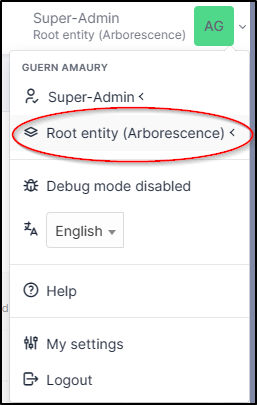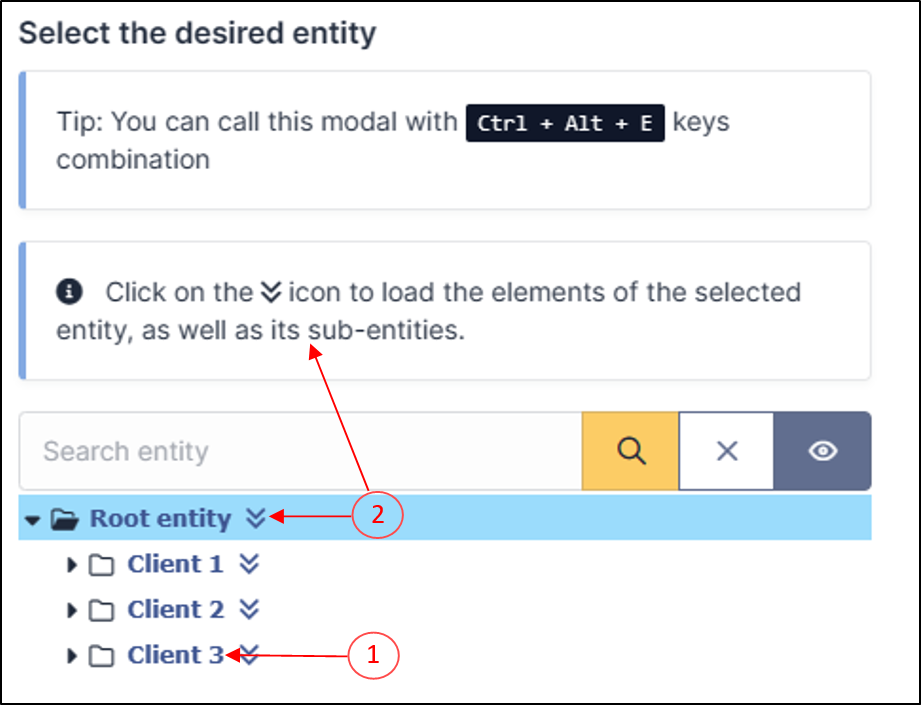Entities#
What is an entity?
Definition: organisational object used to partition the view and scope of action of users.
Entities are used to :
- Partition the view of users who connect to GLPI.
- Show each user only the things they need to see.
- Manage administration delegations.
Examples
By budget entity: the equipment purchased in each entity is well separated. Most of the time for each IT department, a separate entity. Important: GLPI can be used with a single entity.
Important to know
GLPI does not limit the creation of entities. The more you increase the number of entities : - The more complex the system becomes (rules, failover, etc). - The longer it takes to execute requests.
Administrators often want entities to meet a need, whereas other concepts requiring less complexity are there to meet it:
- Group: to assign equipment/tickets to a department or a team of people.
- Location: to determine the geographical position of the equipment/person.
Where can i manage entities?
- is done from the menu
Administration>Entities; - the root entity cannot be deleted, only renamed.
how to navigate in the Entities?
Click on the Root Entity (Tree) link:
A menu appears, allowing you to restrict GLPI's view :
- either on an entity by clicking on its name.
- or a tree structure under this entity by clicking on the double green arrow to the right of the entity name.
Why can i add new sub-entity?
As soon as there is at least one entity, GLPI adds a "Sub-entity" field to certain objects.
By using this field, you can choose whether the object has a scope:
- Local: it will only be visible in the entity in which it is located.
- Global: as Local with visibility in its sub-entities.
Example
Suppliers
- An administrator of an entity creates its suppliers (local).
- A GLPI administrator creates suppliers common to all entities (global).
Contracts and contacts
- A contract is common to all entities (global).
- An administrator of an entity creates its own contacts for this contract (local).
Why aren't the entities I've created visible even though my super-admin profile is in recursive mode?
When creating an entity, remember to disconnect/reconnect in order to be able to see them in the list.
How do I customise the information for an entity?
From
administration >
entities, go to the address tab to modify the information specific to your entity.
Can I customise an entity's interface?
It is possible, this step requires knowledge of CSS. From
administration >
entities, you can activate CSS customisation. Insert the CSS code you need to customise your interface.
How do I change an entity's email addresses?
If you want your entity to use a particular send and/or reply address, you can change it so that it does not use the default address. From
administration >
entities, go to notifications and change the desired information to the values of your choice.
I have a default ticket template but I want to use another one for a particular entity, how do I go about this?
From
administration >
entities, go to the assistance tab. You can change the ticket, change and problem templates to the ones that suit you best. You can always go back by clicking on
default.
How can I see all the rules assigned to an entity?
From
administration >
entities, go to the rules tab. You will be able to see all the rules that apply to the entity.


